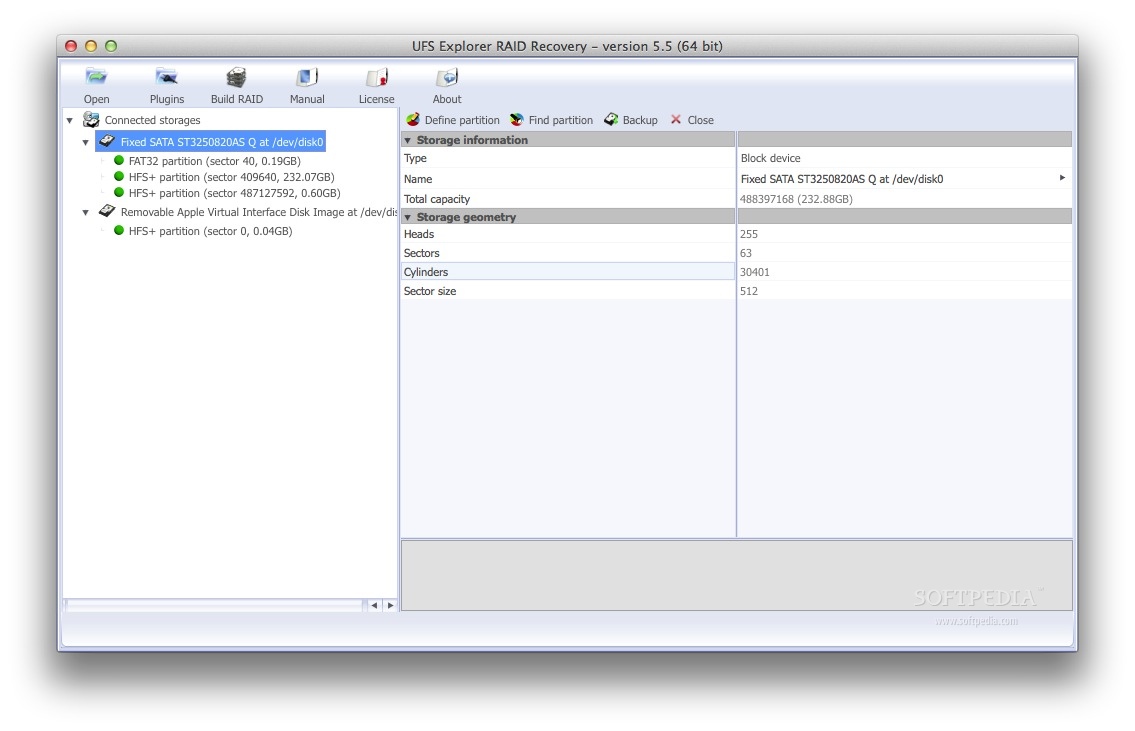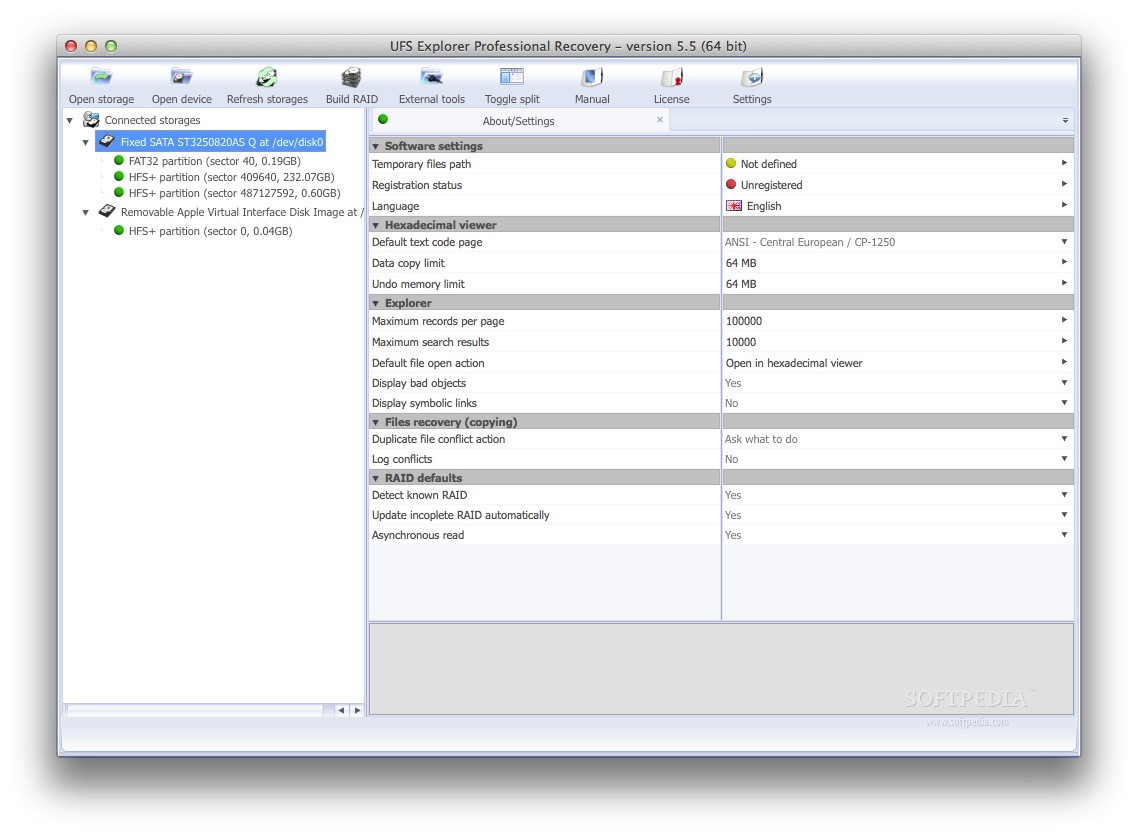

- Ufs explorer raid recovery 5 install#
- Ufs explorer raid recovery 5 full#
- Ufs explorer raid recovery 5 software#
- Ufs explorer raid recovery 5 professional#
Pick out a computer that will serve as a host one during data recovery and install UFS Explorer onto it. To recover files from nested RAID using UFS Explorer RAID Recovery, you will need to perform the following steps: Either way, the array is built in the virtual mode, without writing anything to the source disks. Alternatively, the user can assemble the storage manually from its component disks or their images. If the RAID metadata is not seriously flawed, the program will read out the parameters of the array and reconstruct the initial configuration. SysDev Laboratories offers UFS Explorer and Recovery Explorer as effective instruments that allow handling RAID units of various complexity, including nested or hybrid patterns, like RAID 01, RAID 10, RAID 50, RAID 50E, RAID 60 and many others.
Ufs explorer raid recovery 5 software#
Recover data from a nested RAID set, such as RAID 01, RAID 10, RAID 50, RAID 60, etc.Īs long as the array remains operable (even if it is degraded), suitable data recovery software will be able to restore the files that went missing due to a logical mishap.
Ufs explorer raid recovery 5 full#
Like with any other storage, data overwriting that may be caused by the operation of full format, system activity or the TRIM command on SSDs make the lost files unrecoverable Įncryption of the nested RAID volume in the majority of instances doesn’t obstruct the procedure, provided that the critical encryption metadata wasn’t destroyed and the user has the correct password or decryption key. Replacing the drive and rebuilding the system may lead to even more acute data loss If any of the drives has signs of forthcoming failure, it is advisable to make its copy and work the disk image instead of the physical device.
Ufs explorer raid recovery 5 professional#
Such a storage should be sent to a professional service provider. If the number of broken disks in RAID is larger than the one tolerated by the chosen configuration, data recovery is possible only after they are fixed. Other considerations that should be taken into account are:

For instance, if we take RAID 60, each of the RAID 6 sets it comprises may lack up to two member disks thanks to double parity, but the top RAID 0 configuration has no parity and cannot be built even without a single RAID 6 element.

The only difference is that the components of the top RAID are themselves represented by disk arrays. In fact, the fault-tolerance capabilities of such a RAID correspond to the ones of the standard RAID types. The number of intact disks that will be adequate for data recovery depends on the applied combination of algorithms. The procedure itself is performed from the bottom to the top: first, the arrays constituting the lowest level (indicated by the first digit) are to be built and then the obtained RAID volumes are assembled into another RAID, whose type is designated by the second digit. Recovery of data lost from such a system is possible, however, before that each of the levels in these hierarchy needs to be reconstructed. The lowest level of the system is denoted by the first digit in the name and the second digit represents the highest level. The most common nested RAID layouts are RAID 01, RAID 10, RAID 03 (RAID 53), RAID 30, RAID 05, RAID 50, RAID 15, RAID 51 and RAID 60. In fact, the nesting technique allows creating RAID which has other RAID sets as components: several portions of physical disks are organized into RAID units of the same type and the resulting logical drives are joined on the higher level into another RAID. While basic RAID configurations employ either striping, mirroring or parity to create a storage, nested RAID utilizes two of the mentioned methods in a single array. Still, even a nested RAID implementation may appear to be helpless in the face of logical issues that result in the impossibility to access mission-critical files or even a total data disaster. This technology is referred to as nested or hybrid RAID and gets widely deployed by users whose requirements cannot be covered by any of the conventional layouts. Standard RAID levels can be easily combined in one system to obtain additional benefits, like enhanced performance, redundancy or even both. How can one recover files from nested RAID?


 0 kommentar(er)
0 kommentar(er)
